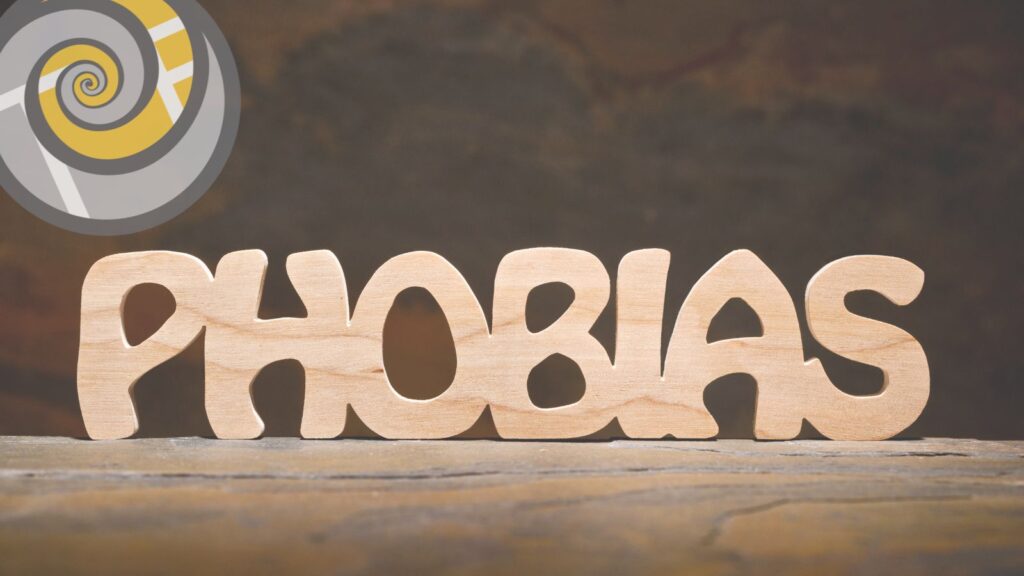Take a wild guess…. “What is Samhainophobia? I’ll return to this later.
For anything and everything that exists in the world, there is someone alive today who has a phobia of it.
The most common ones are fear of heights, public speaking, fear of flying, enclosed spaces, storms, needles, dogs, clowns. The list goes on. Many years ago I helped someone overcome their oral fear of others eating, also known as misophonia. When they chewed it was perfectly fine, but others eating…absolutely not, full blown anxiety attack.
All fears, phobias and anxieties are learned. You weren’t born with any of it. Even though it may seem ‘you always’ had it, that is simply not true. However, you may have learned your phobic response at a very young age.
So what is Samhainophobia? It is the fear of Halloween. The Celts celebrated the transition between summer and winter with the Samhain festival… “Samhuin” meant summer’s end.
How do phobias develop? A phobia is a learned response to something that was interpreted at that time as dangerous, when it may well not have been dangerous at all. And the anxiety / phobic response is designed to remove you from the perceived threat. That’s all. That’s all anxiety wants, to get you out of there, right now! A child getting scared by an adult wearing a gruesome mask could totally install a phobia.
But we don’t necessarily need to get scared ourselves. If we witnessed, as a child, a grown up consistently being hysterical in response to something, chances are we will start to copy that behaviour. To the subconscious mind this thought process is perfectly logical – “I have no idea why that would be dangerous but the way you’re behaving…? Wow!!! I better be afraid of that from now on…” Monkey see, monkey do….
A dear friend almost installed a spider phobia in her 4 year old daughter. “Arggghhhh… spider…. spider…. argh….” waving her arms around, jumping up and down. The two little brains did something along the lines off “whoa, so this is how we react to spiders! Okay, if mum is reacting like that, then yes, these spiders must be super dangerous…” Definitely, not the kind of modelling we want!
Quickly I started to ask questions: “What would that spider look like with a big party hat on? What about rainbow wellies with polka dots on every foot? The more outrageous a picture I painted for them the more they giggled and relaxed. Phew!
Back to the scary Halloween mask.
The subconscious has different options on how to interpret the event. Let’s say it was a wolf mask and from now on the child is scared of wolves. Chances are it may also start to be scared of dogs, just to be sure, because they’re somewhat similar. Let’s say it happened in the dark so it could also be interpreted as “the dark is dangerous because that’s when wolves appear” so I better be afraid of the dark from now on. Or it happened on Halloween so it’s safer to be afraid of Halloween from now on…All of it seems perfectly logical at the time.
The fear is trying to keep you safe. Read that again: Your fear is trying to keep you safe! And it does so by wanting to make sure you stay well away from the perceived threat. The keyword of course is “perceived”. Because neither Halloween, nor dogs, nor the darkness are inherently dangerous. But the subconscious created a massive generalisation and decided Halloween was dangerous and must be avoided at all cost.
And now the fear response is just a very subconscious response. “This situation is just like that old situation, so let’s panic…”.
Simply put: stimulus => response.
Here is the amazing thing though, once the subconscious realises that it was a misinterpretation and that it simply had connected the two wrong dots, then it lets it go… However, understanding this with your conscious and logical mind will never make a difference. It will just leave you feeling even more hopeless and helpless.
But once your subconscious mind really gets it, through the power of clinical Hypnotherapy, most people set themselves free very quickly, gently and easily. And finally you can develop a new response. A response that is appropriate for the grown up person you are today.

